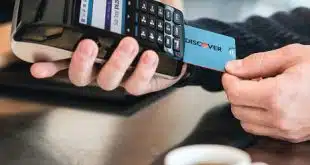An absence of incentives?particularly for merchants?is handicapping contactless payments in the U.S., and by extension mobile payment at the point of sale could suffer, according to a new report. About 40,000 U.S. merchants now accept contactless cards and fobs, or 0.5% of all merchant locations. That number will grow to 271,000 over the next six years, but the penetration rate after that time will still be only 2.5%, projects the new report, which was released recently by Boston-based researcher Aite Group LLC. If these projections prove accurate, it will mean rough going at best for near-field communication (NFC), a type of short-range, two-way transmission technology that the bank card networks and mobile operators are counting on to support handset-based transactions at the point of sale. To make NFC work, cashiers must be equipped with contactless readers. The painfully slow merchant penetration by contactless “kills NFC,” Nick Holland, a senior analyst at Aite and author of the report, tells Digital Transactions News. “It just can't happen unless [contactless] is in place.” Various bank and non-bank players have launched NFC pilots over the past two years, with the two most recent tests starting last week in Spokane, Wash. (Digital Transactions News, Jan. 28) and San Francisco (Jan. 30). Holland blames the sluggish merchant uptake on a failure by the card networks to show a strong business case for contactless payment. In many cases, networks like MasterCard Worldwide's PayPass and Visa Inc.'s payWave have subsidized point-of-sale readers that can accept contactless cards. But Holland says getting merchants to install such gear without subsidies will be a tough sell. This is largely because most merchants don't see enough benefit in the speed of throughput offered by contactless technology. Contactless transactions are faster even than cash, according to card-network studies, but may not be fast enough to offer a tangible advantage over simply forgoing a signature and swiping a card. Bank card network rules allow stores in certain merchant categories to process transactions without a signature for payments under $25, the transactions contactless technology is aimed at. “Maybe [merchants] have a sufficient solution with just waiving the signature,” says Holland. If so, he adds, “I think waiving the signature for transactions under $25 just torpedoes contactless.” Compounding the problem, Holland says, is anemic bank and bank network marketing for contactless payments. Cards fitted with the chip-and-antenna inlay necessary for radio-wave interface with point-of-sale readers cost about $1 more than conventional mag-strip cards. Some 19 million contactless cards have been issued so far by a number of banks. “That's essentially squandered if you don't tell anyone about it,” Holland notes. Holland argues merchants need a pricing incentive to clinch the business case for accepting contactless cards. The problem is especially acute, he argues, for merchants selling low-value goods that are confronted with replacing a relatively low-cost cash payment with a contactless transaction costing the same as an ordinary card transaction. He proposes the card networks create a special interchange rate specific to contactless payments. Both Visa and MasterCard, as well as some electronic-funds transfer networks, have introduced interchange breaks for small tickets, but none has created a rate especially for contactless. At the same time, the networks have not hesitated to use interchange breaks to foster new payment technologies in the past, including credit card draft capture and, most recently, authentication methods for Web payments, such as Verified by Visa. “Once uptake levels have reached a critical mass and contactless payments are entrenched,” Holland says in his report, “the fee structure can be altered to afford issuers and the networks a greater degree of revenue generation.” Without such an incentive, he warns, both contactless payment and NFC could be in jeopardy. The current level of merchant adoption?and of consumer usage?is such that “I get the feeling contactless has lost favor,” Holland says.
Check Also
Amid Many Changes, Acquirers Retain Their Importance Among Card Brands
Though the big news about Discover Financial Services is its pending acquisition by Capital One …





